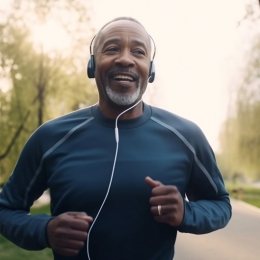5 exercise questions to get the most out of your workouts
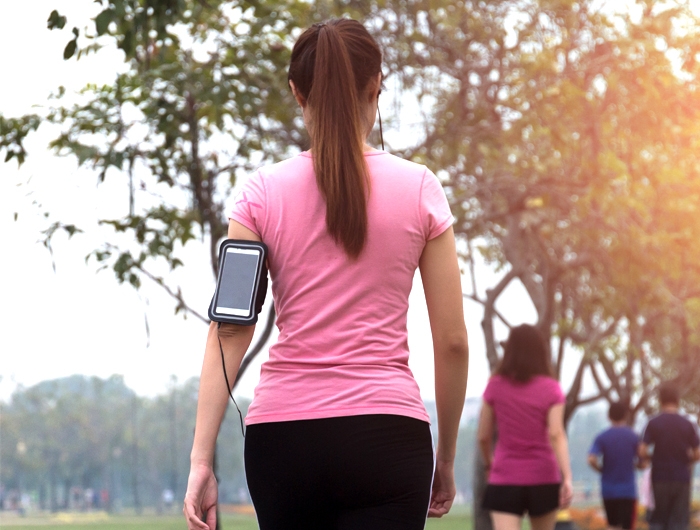
bignai - stock.adobe.com.
We could all use some inspiration to make exercise a habit...and some advice about how to make our efforts count. Here’s the latest on core training, incline walking, healing an injury, whether to time your protein intake, and fitness trackers.
1. Core! What is it good for?
“You want to think of your core as the foundation of your house,” says David Behm, a professor in the School of Human Kinetics and Recreation at the Memorial University of Newfoundland in Canada.
“Without your core, your house isn’t going to stand up in a storm.”
And your core is more than just your abdominal muscles.
“The core muscles are divided into local and global muscles,” Behm explains.
The local muscles are located deep in your trunk and are often called the “deep core.”
“Think of them as your stability muscles,” says Behm. “They are the muscles that join one vertebrae to the next and that provide stability to your pelvis.”
On the other hand, “the global muscles are your mobilizers.”
They’re responsible for movement (as well as some stability). They’re located closer to the body’s surface and get a lot of attention from those working to build six-pack abs.
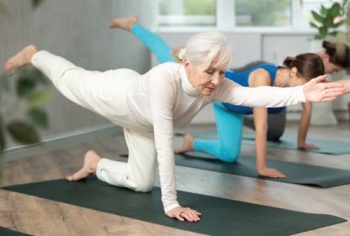
It’s hard to think of an activity—day-to-day or athletic—that doesn’t require your core muscles. Want to get up out of a chair, shift your weight from one foot to the other when you walk, or unload the dishwasher? All activate your core.
“Running is also a core exercise,” says Behm.
“We did a study where we found that running activated the lower abdominals to a similar degree as doing crunches.” And running activated the back stabilizer muscles more than a back extension exercise.
Why care about your core? “One of the major disadvantages of having a weak core is low-back pain,” says Behm.
“The local muscles are trying to anticipate movement so that the ligaments between the vertebrae don’t get stretched out and damaged.”
But if the local muscles are weak, they can’t adequately support the ligaments, which can lead to injury or chronic lower-back pain. The good news: working the deep core can help stabilize the lower back and ease low-back pain.
Ready to fire up your core?
Target the deep core
To build core stability, Behm suggests an exercise called “hollowing.”
“In a seated position, pull your belly button back toward your spine and pretend you’re taking a bowel movement,” he says. “That makes the deep core muscles work really hard.”
Add functional exercises
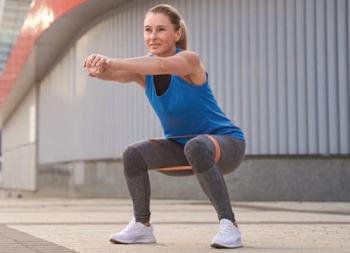
Squats, deadlifts, and lunges engage your core. “They’re functional because they mimic movements you do every day, like bending down to pick something up,” says Behm.
Introduce instability
“If you’re doing crunches, you’re working the global muscles, but you’re just lying on the floor so your local muscles don’t have to work very hard,” says Behm. “You want to put them under some stress by creating instability.”
For example, “planks are great, but how often are you just holding yourself in one position?” Instead, do planks while raising one foot or hand at a time off the ground.
Add some rotation
“If you’re hitting a tennis serve or even just reaching across your body to grab a cup out of the cupboard, you’re rotating your core,” says Behm.
Build those muscles by doing bicycle crunches or standing “wood chops.”
2. RICE it?
What happens when you sprain an ankle, pull a muscle, or hit your thumb with a hammer?
“Initially, you get damage to the injured structure, which could be the muscle, a tendon, or a ligament,” explains Susan Kwiecien, manager of clinical research at the Nicholas Institute of Sports Medicine and Athletic Trauma at the Manhattan Eye, Ear & Throat Hospital at Northwell Health.
“That primary injury leads to inflammation and other damage to nearby tissue, creating a secondary injury.”
If you’ve suffered a sprain, muscle pull, or other similar injury, you’ve probably heard that you should RICE—rest, ice, compress, and elevate—it.
But does RICE work?
Rest
“In the acute stage after an injury, say, the first two hours or so, you should probably rest,” says Kwiecien. But as time progresses, “active recovery is much better. You want to move around as much as your injury allows.”
If you have pain, back off. “But you don’t want to be stagnant,” says Kwiecien. When it comes to managing an injury, remember: motion is lotion and rest is rust.
Ice
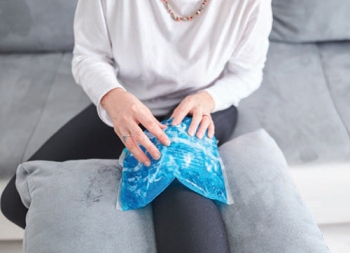
No human trials have tested icing immediately after an injury.
“It’s hard to do that type of research in people,” Kwiecien explains. “You’re not going to injure people just to study icing.”
But animal studies suggest that if you’re going to ice, you need to do it quickly. “That first 30 minutes may be a window of opportunity to intervene and shorten the inflammatory stage of the injury,” says Kwiecien.
“If you’re not icing right away, you’re probably missing the ball.”
The good news: “A lot of animal studies show that icing reduces inflammation,” says Kwiecien. “And icing repeatedly, not just one time, reduces the size of the secondary injury.”
Want to give ice a chance?
To start, ice as soon as possible, but for no more than 20 minutes at a time. (Wrap the ice pack in cloth rather than applying it directly to your skin.)
“Icing for longer than 20 minutes comes with the risk of skin-related cold injury like frostbite,” says Kwiecien. Remove the ice for 30 to 40 minutes, then repeat.
“Ice for the first six hours,” says Kwiecien, “even 12 hours, if you can.”
“But beyond the first day, there’s no point in using ice, except for its pain-relieving properties. If you’re using ice for pain, use it for as long as you’d like.”
A safety note: “If you’re shivering, stop icing,” says Kwiecien. “That’s an alarm bell that your body is in danger.”
Compression & elevation
Can wrapping and elevating your injured ankle, say, speed your recovery?
“In theory, compression prevents swelling and elevation helps drain excess fluid away from your injury,” says Kwiecien.
On its own, compression doesn’t seem to help, though wrapping an ice pack around the injury may improve ice-to-skin contact and help lower the temperature of the tissue, Kwiecien notes.
But elevating an injury doesn’t do much to speed recovery.
3. Time your protein?
You just racked your weights after a strength-training session. Should you gulp down a protein shake to help you build bigger, stronger muscles?
“That’s basically the anabolic window theory,” says Alan Aragon, a researcher who specializes in nutrition and body composition. (By “anabolic,” he means muscle building.)
“The early proponents of that theory basically said ‘You need to consume protein and carbohydrates within 30 to 60 minutes after resistance exercise,’” says Aragon. “‘And if you don’t do that, you’re going to delay recovery and ultimately delay muscle growth.’”
Why?
“Some short-term studies suggested that when you consume protein and carbs immediately after resistance training, muscle protein synthesis is higher than if you delay intake,” says Aragon.
But short-term muscle protein synthesis doesn’t necessarily translate into bigger or stronger muscles over time.
“The results of longer studies that looked at muscular adaptations to resistance training were very hit-and-miss as to whether the protein-timed conditions were superior to conditions where the protein wasn’t ingested immediately post-exercise,” Aragon explains.
“So we decided to run a meta-analysis of those studies.” (The analysis was funded by a company that sells protein powders.)

“We found that as long as you’re getting enough total protein each day, even if you don’t hit the narrow ‘anabolic window,’ you’re still going to get roughly the same degree of muscular gains.”
So there’s no reason to think that eating protein after your workout is better than eating it at any other time of day.
Aragon’s advice: “Eat the way you would normally eat.”
Just keep in mind that extra protein only seems to help if you’re young and doing intense strength training; and even then, it makes only a small difference.
Otherwise, you probably don’t need to worry about protein unless you’re getting too little. And most Americans eat plenty.
4. Head for the hills?
If you’ve seen walkers huffing their way up a steep treadmill at the gym lately, you may be witnessing people participating in a viral workout trend.
The 12-3-30 workout (walking on a treadmill at a 12 percent incline at 3 miles per hour for 30 minutes) was first posted on TikTok in 2019.
“I know that things get popular on social media, and people think this fad is a new idea,” says Julia Iafrate, a sports medicine physician and clinical assistant professor in the departments of orthopedics and rehabilitation medicine at the NYU Grossman School of Medicine.
“The fact that somebody gave it this cute little label—the 12-3-30 workout—doesn’t matter. Since humans started walking, we’ve been walking up hills.”
And walking up hills does a body good.
“When we walk uphill, our center of gravity gets pushed backward,” says Iafrate. “To compensate for that, we have to take higher steps and lean our torso forward to offset gravity. That engages the muscles of our posterior chain, which include the glutes, hamstring, and calf muscles.”
But how much we engage those muscles varies. In one study, researchers had 10 young and 10 older adults walk on a nearly 16 percent incline. The calf muscles of the older adults fired roughly 20 percent less—and their glutes fired two times more—than those of the younger adults. (The older folks’ glutes also fired nearly twice as much at 5 and 10.5 percent inclines.)
“As we age, our muscle mass tends to drop,” explains Iafrate. And we feel the loss from small muscles like calves more than from big muscles like glutes.
“That study shows that the bigger muscles have to pick up the slack,” she notes. Because their glutes have to work harder, older adults may have more trouble walking uphill.
But that doesn’t mean they should quit trying. On the contrary, “they should focus on strengthening the muscles around the hips,” says Iafrate.
“The muscles of the posterior chain are really important as we get older. They’re necessary for going from sitting to standing and will help you maintain your mobility and independence.”
What else can walking uphill do?
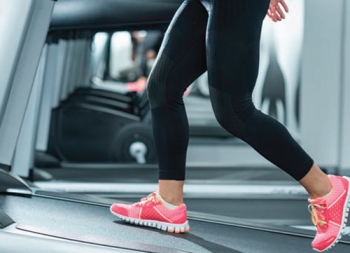
“It’s going to boost your heart rate more than walking on flat ground, which is going to help with cardiovascular health,” says Iafrate. “It will also condition your body for more realistic terrain. Uphill walking can help you navigate uneven surfaces, walking up and over curbs, and so on.”
“You’ll also be taking deeper breaths, which is going to expand your lung capacity,” she adds. And you’ll burn more calories than walking on level ground.
But before you lace up your sneakers and ramp up the treadmill to 12 percent, there are a few things to keep in mind.
“A 12 percent incline is really steep,” notes Iafrate. “A lot of people end up holding on to the handrails to do it. That transfers much of the effort to your upper body, which means you’re not reaping the benefits of incline walking. If you have to hold on, drop the incline down.”
The same goes for people whose back pain is triggered by incline walking.
“Drop the speed or the incline while your body learns to adjust to that range of motion,” Iafrate suggests.
If you do uphill walking, “doing it every day probably isn’t the best idea for most people,” says Iafrate. “You’re overusing the same set of muscles without giving them time to repair. They’ll start to get tight and fatigued.”
“Think of this as something that you can do occasionally to add to your routine, but it’s not the only type of exercise you should do.”
5. Use a fitness tracker?
In 2023, the global market for wrist-worn fitness trackers and smartwatches—like Fitbit, Apple Watch, and Garmin—is expected to hit $19.3 billion.
Here’s what many people don’t know about them.
Which wrist?
The accuracy of your fitness tracker depends on how you wear it. For example, thanks to activities like writing, eating, and brushing your teeth, wearing your device on the wrist of your dominant hand may overestimate your activity.
“Some companies try to compensate for that,” says Alexander Montoye, an associate professor of clinical exercise physiology at Alma College.
“If you note, while setting up the tracker, that you wear it on the dominant wrist, it adjusts the sensitivity of the algorithm, though the adjustments may not be perfect.”
Steps
A fitness tracker uses arm swings as a proxy for steps. But it’s an imperfect measure.
“If you’re pushing a stroller or a shopping cart or if you’re holding your cell phone and texting while walking, your wrist is relatively stable, and the device will tend to miss some steps,” says Montoye.
To test the accuracy of wrist-worn fitness trackers, his team had 86 adults wear one along with a research-grade hip-worn pedometer while doing:
treadmill exercise (walking or jogging at 4 miles per hour and a 3 percent incline for 30 minutes),
treadmill walking (at 3 miles per hour for 55 minutes), or
their daily activities at home.
The fitness tracker recorded about 6 percent fewer steps than the pedometer during both types of treadmill activity.
That’s not bad.
“But the fitness tracker recorded about 20 percent more steps than the pedometer when people were going about their day-to-day life,” says Montoye.
Why?
Wrist-worn trackers may mistake arm movements like folding laundry or washing dishes for steps.
Heart rate
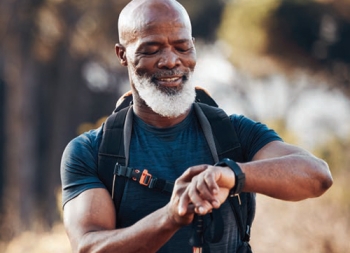
To measure heart rate, fitness trackers “shine a light through your skin,” Montoye explains. “The light gets refracted based on how much blood is in the vessels of the wrist.”
“When your heart beats, there’s a small surge of blood through the blood vessels, which the tracker registers as a heartbeat.”
Just make sure the tracker isn’t loose.
“Heart rate is measured best when the device is tight enough so that it doesn’t move around,” notes Montoye. “It needs consistent contact with the skin.”
As for accuracy: “In general, fitness trackers do pretty well at measuring heart rate at low-intensity exercise,” says Montoye. At higher intensities, the trackers tend to give less accurate heart rate readings.
Some (but not all) studies show that skin tone may also affect the accuracy of fitness trackers’ heart rate readings.
“At least historically, the signal transmitted better through lighter skin tones,” says Montoye. But newer devices often use multiple sensors, which may improve the accuracy of heart rate measurements, including in people with darker skin tones.
Energy expenditure
How do trackers measure the calories you’ve burned throughout the day?
“The companies don’t tell you,” says Montoye, “but we can be pretty confident in a couple things: all trackers ask about your gender, height, weight, and age.”
The device probably plugs that data into a basic equation to estimate how many calories you burn at rest. Then it likely uses your heart rate and its internal accelerometer to create an algorithm that estimates the calories you burn when you’re active.
Just don’t rely too heavily on the numbers.
“I have not seen many studies suggesting that those calorie estimates are precise,” says Montoye. “Pretty universally, across all types of fitness trackers, the error is high.”
In fact, in a recent review of the data from 22 studies, researchers reported that calorie burn measured by a variety of fitness trackers was off by an average of more than 30 percent for all brands.
“It will also depend on the activity,” says Montoye. “The watches underestimate calorie burn from cycling, for sure.”
His takeaway: “Don’t change what you eat based on what your device is telling you about calories.”
Given the shortcomings of fitness trackers, is it worth using one?
“You have to consider how the device affects you,” says Montoye. “Is it inspiring you to be more active? Are you learning things about your behavior? Maybe you didn’t realize how sedentary you were every evening and now you take a walk after dinner.”
Or does the bad outweigh the good?
“Are you just stressed about your step goal? Are you moving away from activities that are good for you just because they don’t register well on a device?”
For Montoye’s part, “I’ve worn a tracker for the last 10 years, and I recently stopped because I now know enough about my behavior patterns.”
“I know that on most days, I meet my goals. I know that on my resistance training days, I take fewer steps, and that’s okay. And I’ll be honest; it’s been kind of liberating to not have a device buzzing at me, telling me to get up and move. I know when to move.”
Tags
Topics
More on exercise
Are you too old to build muscle?
Physical Activity
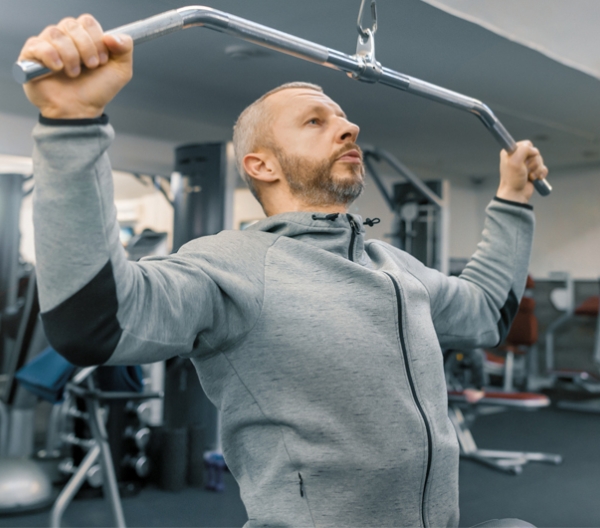
What to do if you have osteoarthritis
Preventing Disease
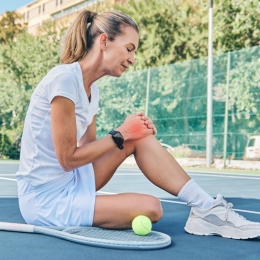
Can exercise help you dodge depression?
Physical Activity

What can taking the stairs do for you?
Physical Activity
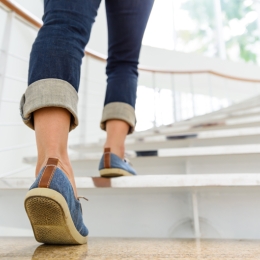
Weekend physical activity may protect your heart
Physical Activity
